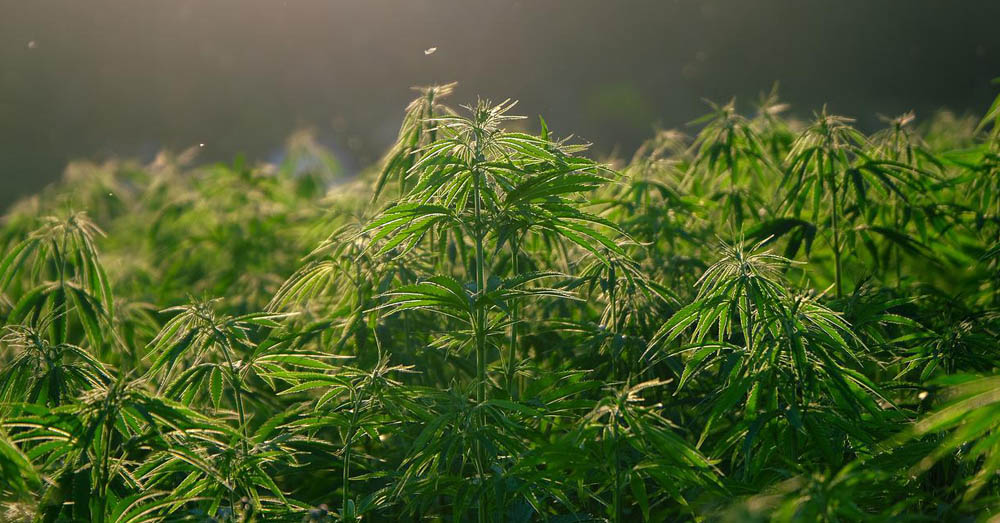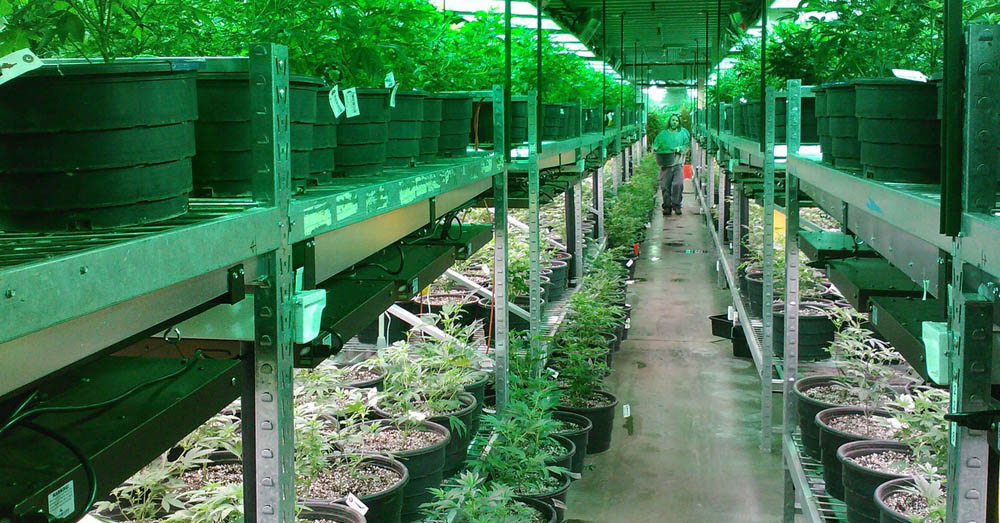Ever wondered where these orange hairs on your weed come from? Have you guessed if it has any side effects or unique flavors associated with it?
We’ll answer these questions and more in this quick guide to why orange hairs are on weed.
What Are the Orange Hairs on Weed?
The orange hairs on a marijuana plant are called “pistils.” These are only present on female marijuana plants and help collect pollen from male plants during the flowering stage.
Let’s find out more about what they are and their purpose in the plant.
The Role of Orange Hairs, a.k.a Pistils in a Cannabis Plant
Let’s have a quick throwback to Biology class. Knowing the different parts of the plant is essential in understanding what the hairs do.
Different Parts of the Plant
There are many different parts of a Marijuana plant that serve a specific purpose:
- Nodes are the branches separating from the main stem. Buds and fan leaves grow on most nodes.
- The cola is the buds that grow on the nodes and main stem. These cola are usually grouped into a cluster of buds in the lower nodes.
- The calyx is the flower that protects the pistils, which are the reproductive organs of female plants. It has sugar leaves that are covered in trichomes.
- They are protected, in turn, by the bracts. These are the fan leaves that envelop and protect the calyx.
- The trichomes are bulbous sticky resin glands containing cannabinoids like THC and CBD. We’ll get into these more in-depth later.
- Finally, there are the pistils. These are the hairs that protrude from the calyxes. They’re only found on female plants.
What Are Pistils?
The bright orange-colored hairs are called pistils of the plant. The pistils, also called stigmas, are the female sex organs.
They’re not originally orange, as the actual color of the pistils is white. Each strain has its own color that the white hairs develop into.
On marijuana plants, the hairs’ purpose is to collect pollen from a male plant in the flowering stage.
The male pollen is carried by bees, the wind, or by other objects from male to female plants. The hairs then attract the male pollen.
The plant then becomes fertilized or pollinated, and it will start producing cannabis seeds.
This isn’t ideal for the bud quality because the focus of the plant may change from producing flowers to producing seeds.
NOTE: You may notice that the high-quality strain buds you get from cannabis dispensaries have no seeds. This is because they prevent all the plants from being pollinated.
Confusion With Which Part Affects Potency
Many people assume that the stigmas on a marijuana bud determine how potent it is. After all, both are part of the “flower” portion of the plant.
However, the variation in trichomes plays a significant role in producing cannabinoids.
There are only a few trichomes on a non-potent regular strain. This explains the low THC count.
On the other hand, the dank weed strain produces great amounts of sticky resin with a high THC count. This makes it more potent.
The color of the stigmas, whether they’re yellow, brown, bright orange, a cheerful green color, or red hairs, doesn’t affect the potency of the cannabis plant.
What makes these colors change are actually called phytochemicals. These can vary based on the pH level and intentional temperature changes on the grower’s part.
The only time it affects how the buds taste or smell is if they turn dark brown. This is because it’s past the optimal harvest time.
Do Pistils Change After Harvest?
No, the pistils don’t change their color after harvest. This is because they’re harvested after their color changes. Most of these changes happen during the flowering stage.
This stage happens after the female plant becomes pollinated by pollen coming from male plants.
Here’s a quick summary of how the stages progress:
- During the early stages of flowering, which are the first 4-5 weeks, the white hairs of the pistils stay white.
- During the middle stages, which are from weeks 5-7, stigmas will start turning into orange, pink, or red hairs.
- During the flowering plants’ final stages, in weeks 7-10, the majority of the pistils will have vibrant and bright orange, pink, or red hairs.
- Most experienced cannabis growers will observe the flowers’ cycle with a magnifying glass as it happens and will harvest it during weeks 7-10. At this point, around 80 percent of the cannabis flower hairs are colored.
They harvest when not too many orange hairs appear because the stigmas will start to dry and turn dark brown after a while.
This means some of the THC turned into CBN, which has a negative effect on the smell and taste of the bud or flower.
Therefore, if the marijuana plant flowers were correctly harvested, the colorful buds and pistils on them don’t change in color afterward.
REMEMBER: Even though the hairs have turned dark brown, the cannabis will still make you high and have flavor. However, it won’t be as good.
What Strain of Weed Has Orange Hairs?
Experienced growers know that there are many weed strains in the cannabis family. Some of the variations with orange hairs include:
- Blackberry Bubba Kush – this is an intense Indica dominant hybrid strain with purple flowers and orange hair
- Purple Urkle – this strain has stout purple buds covered in orange hair
- Blue Dream – this one has buds in a cheerful green color and hairs that are bright orange
- Strawberry Diesel – a Sativa dominant hybrid with many trichomes and orange hairs
If you want to smoke cannabis strains and take a break with a mellow high, try the Strawberry Diesel or the Blue Dream.
Those searching for marijuana strains with a fruity taste, check out Strawberry Diesel or Purple Urkle.
Beginners who want to avoid weed strains that are too intense or potent should avoid Blackberry Bubba Kush.
Blue Dream is your best bet from these cannabis strains if you want a long-lasting high.
Frequently Asked Questions
You might still have questions about cannabis plants, orange hairs, buds, trichomes, or other topics. We’ve answered the commonly asked questions below:
What Week Do Pistils Turn Orange?
The hairs, called pistils, will first start turning into a yellow color 5-7 weeks into the flowering stages.
Most strains will turn yellow in those weeks but will develop into an orange, brown, green, or another color. This will occur in weeks 7-10.
If the hairs and the buds turn dark brown and dry out, it’s past the optimal harvest period.
Do All the Hairs on the Bud Have to Be Orange to Harvest?
No. 80 percent color change is the best time. If you wait for all the hairs to turn orange, the taste might already change.
The THC would have turned into CBN, which isn’t as potent.
What Happens When There Are Too Many Orange Hairs on My Cannabis Plant?
When too many of the stigmas have turned into orange hairs, this means that the optimal harvest period has passed.
It will still have taste, but it won’t be as good as if you harvested it earlier.
Can a Cannabis Plant Be Both a Male and Female Plant?
This is possible. The term for a plant with both reproductive systems is a hermaphrodite. It would have both stigmas and pollen-producing organs.
It can both pollinate other plants or get pollinated. It’s best to separate these plants from female plants because you don’t want them to get pollinated.
This is because they will start producing seeds which will lessen the number of flowers or buds they can make.
What Are the Other Uses of a Cannabis Plant?
Marijuana’s psychoactive features aren’t only used by hobbyists for recreational purposes. The other primary use of cannabis is its medical properties.
The right amount of marijuana can reduce pain and calm nervous patients down.
How Can I Tell if There Are Many Trichomes on the Cannabis Strain?
You need to look at the surface of the flowers on the calyx. If it seems frosty, sticky, or resinous, then it has a higher trichome count.
Final Thoughts
Hopefully, we’ve clarified what the orange hairs on cannabis mean. It can be confusing to see different colors on the cannabis plants you have.
Pistils are an essential part of a plant’s lifecycle and help growers determine the best harvest time. However, it doesn’t assess potency, which is a common misconception.
Now that you know what orange hairs mean on weed, you can enjoy your next break worry-free!




